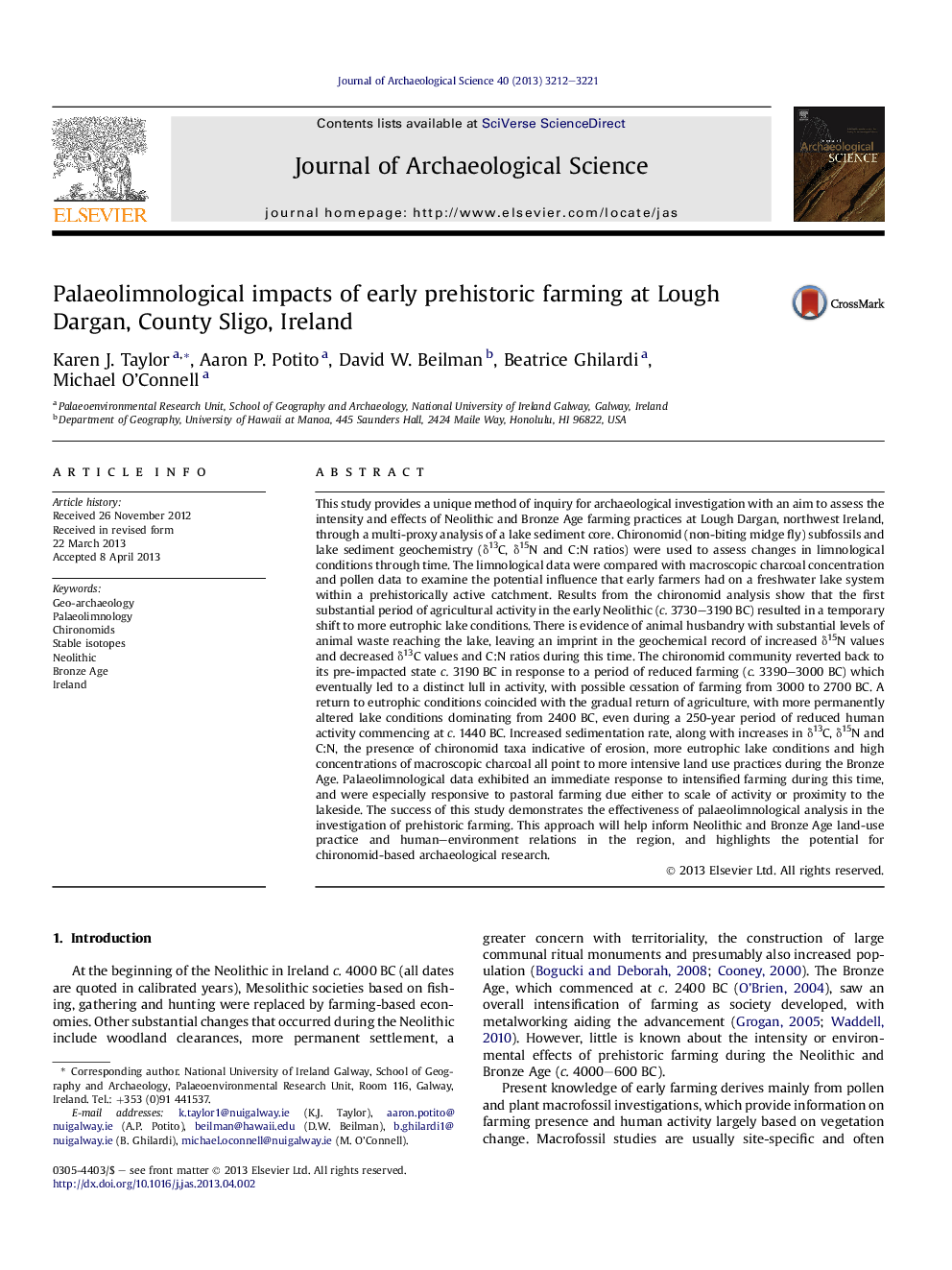| کد مقاله | کد نشریه | سال انتشار | مقاله انگلیسی | نسخه تمام متن |
|---|---|---|---|---|
| 1035407 | 943847 | 2013 | 10 صفحه PDF | دانلود رایگان |

• New multi-proxy palaeolimnological approach for investigating prehistoric farming.
• Methods include chironomid and geochemical analysis of lake sediments.
• Successfully links changes in trophic status with intensity of farming activity.
• Nutrient enrichment of the lake likely caused by substantial input of animal waste.
• Pastoral farming showed greater impact due to scale of activity or proximity to lake.
This study provides a unique method of inquiry for archaeological investigation with an aim to assess the intensity and effects of Neolithic and Bronze Age farming practices at Lough Dargan, northwest Ireland, through a multi-proxy analysis of a lake sediment core. Chironomid (non-biting midge fly) subfossils and lake sediment geochemistry (δ13C, δ15N and C:N ratios) were used to assess changes in limnological conditions through time. The limnological data were compared with macroscopic charcoal concentration and pollen data to examine the potential influence that early farmers had on a freshwater lake system within a prehistorically active catchment. Results from the chironomid analysis show that the first substantial period of agricultural activity in the early Neolithic (c. 3730–3190 BC) resulted in a temporary shift to more eutrophic lake conditions. There is evidence of animal husbandry with substantial levels of animal waste reaching the lake, leaving an imprint in the geochemical record of increased δ15N values and decreased δ13C values and C:N ratios during this time. The chironomid community reverted back to its pre-impacted state c. 3190 BC in response to a period of reduced farming (c. 3390–3000 BC) which eventually led to a distinct lull in activity, with possible cessation of farming from 3000 to 2700 BC. A return to eutrophic conditions coincided with the gradual return of agriculture, with more permanently altered lake conditions dominating from 2400 BC, even during a 250-year period of reduced human activity commencing at c. 1440 BC. Increased sedimentation rate, along with increases in δ13C, δ15N and C:N, the presence of chironomid taxa indicative of erosion, more eutrophic lake conditions and high concentrations of macroscopic charcoal all point to more intensive land use practices during the Bronze Age. Palaeolimnological data exhibited an immediate response to intensified farming during this time, and were especially responsive to pastoral farming due either to scale of activity or proximity to the lakeside. The success of this study demonstrates the effectiveness of palaeolimnological analysis in the investigation of prehistoric farming. This approach will help inform Neolithic and Bronze Age land-use practice and human–environment relations in the region, and highlights the potential for chironomid-based archaeological research.
Journal: Journal of Archaeological Science - Volume 40, Issue 8, August 2013, Pages 3212–3221